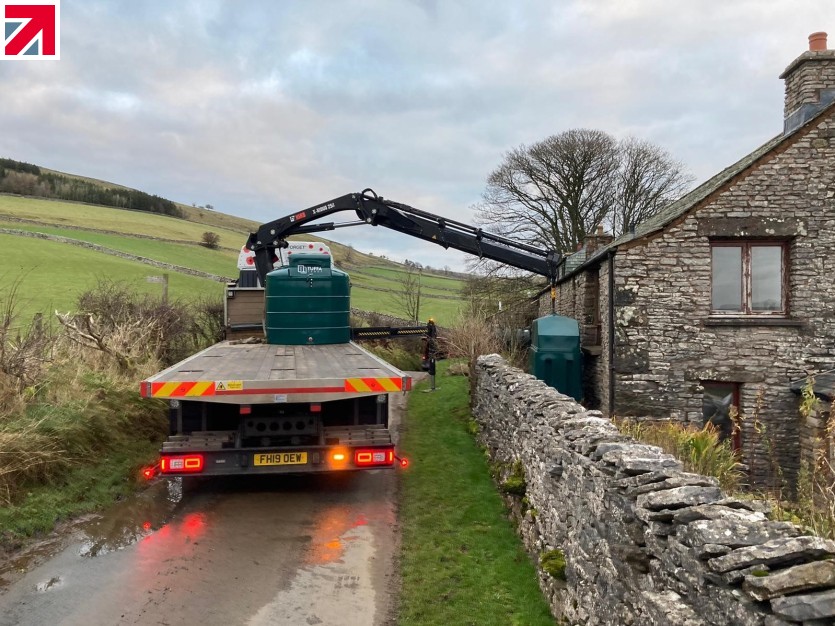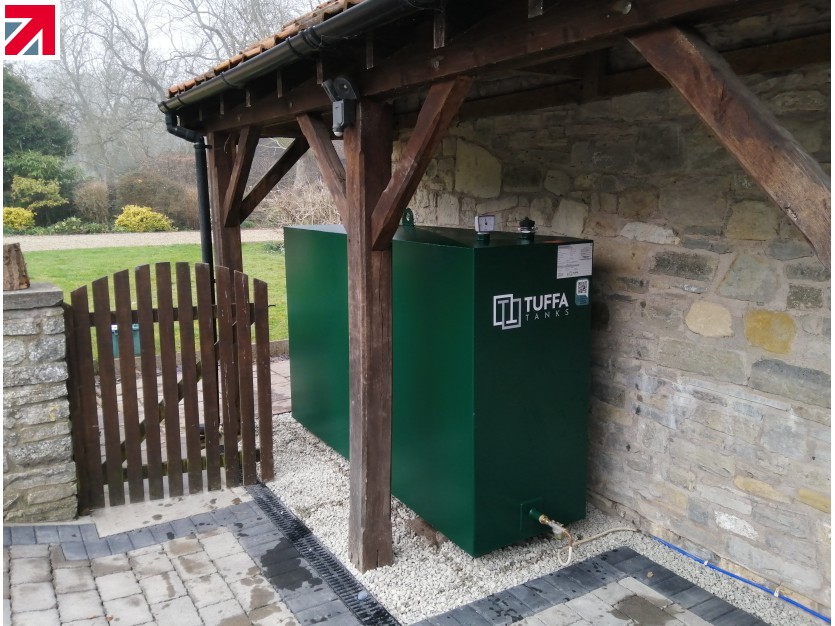Hydrotreated Vegetable Oil (HVO) is a near drop-in alternative to kerosene that produces nearly 90% less greenhouse gas emissions and derives entirely from waste products. The ISCC (International Sustainability and Carbon Certification) has confirmed that production of the fossil-free fuel does not contribute to deforestation and can be correctly labelled ‘sustainable’. With an inevitable ban on the use of kerosene in domestic heating, HVO offers a lifeline for the 1.5 million households across the UK and 0.7 million in the Republic of Ireland currently heating their homes with liquid fuels.
Already, trials in properties throughout the UK have proved there are no technical limitations to replacing kerosene with HVO for heating – all that is required is a boiler conversion which costs around £500 and takes less than an hour to complete. The second phase of trials is underway this winter in which 200 homes and businesses are being converted for HVO to test the logistics and practicality of expanding HVO heating to decarbonise off-grid homes. As oil storage tanks are typically compatible with HVO and HVO blends already (we can confirm that Tuffa’s oil tanks are) the transition from kerosene to HVO should be relatively seamless and affordable.
While the government have not yet published plans to discontinue the use of kerosene altogether, its use is being phased out with the ban on the installation of fossil fuel burners in new build homes from 2025 and existing homes from 2035. The recently released “Heat and Buildings Strategy” reports that around 80% of off-grid homes have sufficient energy efficiency to accommodate heat pump systems. However, Future Ready Fuels (a UKIFDA and OFTEC coalition aimed at helping to convince the government to provide a greater variety of heating options for off-grid homes) are concerned that rural households will be “used by the government as guineapigs to test the roll out of heat pumps”.
The problem here is that heat pumps aren’t a one-size-fits-all solution. Oil-heated homes are often more than a century old and even if they have a consistent enough electrical supply to run a heat pump, the poor insulation of these houses (typically with an EPC Rating between ‘E’ and ‘G’) could lead to poorly heated homes. Heat pumps require a minimum of EPC ‘C’ to work effectively and can be costly to sufficiently insulate; Government calculations suggest that the cost of retrofitting a house with an EPC of ‘E-G’ would be around £15,000. Coupled with the cost of a heat pump or biomass boiler (circa £10,000 – £20,000) it’s not an economically viable option for most off-grid homeowners even with government’s “Boiler Upgrade Scheme” offering up to £5,000 for an air source heat pump. Comparatively, there is no discernible difference in heat output from a home heated with HVO than a home using kerosene, making retrofitting beneficial but not essential to dramatically decrease carbon emissions.
Fortunately, in the Heat and Buildings Strategy the UK Government has recognised that the use of liquid biofuels such as HVO may offer an alternative where heat pumps are not practical. They see the limiting factor as the available supply of the fuel. Demand for HVO to decarbonise other sectors of the economy is high with road transport in particular showing a large appetite for biofuel. HVO is one of the very few sustainable fuels suitable for the rigid requirements of the aviation industry. One proposal offered to combat supply issues is a hybrid system comprising of a heat pump and HVO boiler.
However, Future Ready Fuels aren’t so quick to concede that the supply of HVO should be an issue. Representatives from the project have been in contact with the main European and US HVO suppliers and have received reassurance that their plans to increase production would meet demand from UK domestic heating. It should also be noted that the expectation isn’t to switch to pure HVO immediately, but will begin with a HVO blend with the purity gradually increasing to 100% over time. This will allow for a smoother transition for homeowners, the energy industry and the government while providing more time to increase HVO production.
Supply and demand for HVO could also change rapidly. The facilities and supply of waste materials used to produce HVO is also increasing. HVO production is forecast to rise by over 300% in Europe alone between 2020 and 2025 with the rest of the world including the US expected to increase production by a similar amount. We’re also experiencing greater investment in and uptake of electric vehicles which could result in less demand for the renewable fuel in the near future. It’s hoped that the subsequent void will free up a greater supply dedicated to heating.
A final hurdle for homeowners and businesses alike is the cost of the fuel. HVO is currently only commercially available as an alternative to diesel and retail costs higher than the fossil fuel. However, the industry is hoping to shrink the hurdle by urging the government to incentivise the renewable, low-carbon fuel in the same way that has already been done for transport. Even without subsidies, the comparatively small initial capital required will likely make HVO heating more affordable and realistic than low-carbon options currently on the market.
Anyone invested in seeing HVO acknowledged by the government is encouraged to add their voice to OFTEC, UKIFDA and Tuffa by writing to their MP to request that renewable liquid fuels are supported as part of future heating policy. A template letter is available on the Future Ready Fuels website.
Remember, while we’re still waiting for legislation to change, your Tuffa tank is already compatible and future-ready! However, if you have a single skin tank, a plastic tank over 20 years old or a steel tank over 30 years old then we would recommend purchasing a new bunded Tuffa oil tank when switching to HVO or a HVO blend. If you want to replace an oil tank or install a new tank next to a building or boundary then check out our Fire Protected Oil Tanks. This unique tank range is LABC Assured and allows compliant installations adjacent to buildings and boundaries.
More information and installation advice are available on our Expert Guide to Fire Rated Oil Tanks.
Find out more about Tuffa Tanks on their member profile page here
Member-created content 4 years ago | From members

